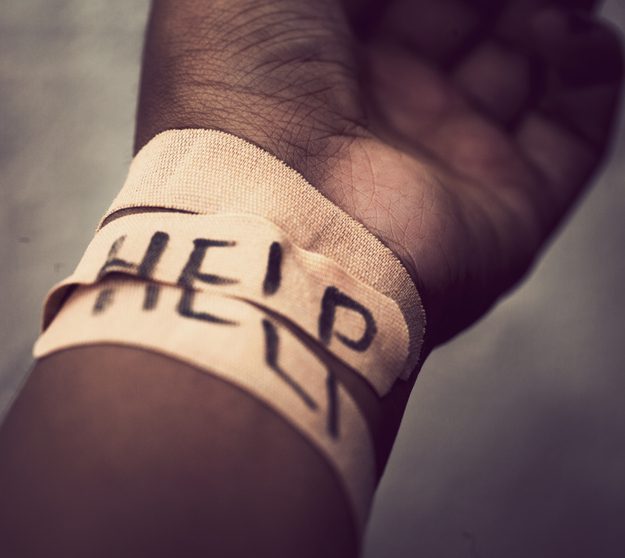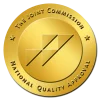It’s Not Mental Illness, It’s Not Suicide: A Look at Self-Harm
Self-harm, or non-suicidal self-injury, means hurting yourself on purpose. Rates of self-harm are highest among young people but anyone, at any age, can engage in self-harm. According to the American Psychological Association, reports as of 2015 show that about 5% of adults engage in self-harm, and about 17% of teenagers report having self-harmed at least once. What exactly qualifies as self-harm behavior, why do people hurt themselves, and what will help them stop?
How do People Self-Harm?
Self-harm can take many forms, all of which can create risk of severe injury, but most commonly it falls into four categories:
- Cutting – using sharp objects to break through or injure the skin
- Hitting – using one’s own body or a solid object to hit the body (punching or banging one’s head against the wall, for example)
- Scratching/rubbing – using fingernails, hands, or other objects to scratch or rub the body to the point of skin damage
- Burning – using hot objects, like cigarettes, matches, or oven burners, to burn the skin; household chemicals may also be used
Other forms of self-harm include inserting objects into body openings, infecting oneself, or ingesting something harmful.
Self-harm is intentional and conscious. So behaviors that harm the body but aren’t intentional would not necessarily be classified as self-harm. For example, someone who picks their skin (whether it’s healthy skin, pimples, calluses, scabs, etc.) often does so unconsciously, at least at first. Skin-picking and similar unconscious behaviors are associated with obsessive-compulsive disorder and not considered self-harm.
Is Self-Harm a Mental Illness?
No, self-harm is not a mental illness in and of itself. It is behavior that people use as a coping skill to deal with difficult emotions or emotional numbness. Sometimes people self-harm as a way to feel more in control–to prove to themselves that they can handle pain.
That said, self-harm can be (and usually is) a symptom of mental illness. People who have developed trauma in response to certain life events or situations may be more likely to self-harm, and mental illnesses like borderline personality disorder, depression, anxiety, and eating disorders can also make a person more susceptible to self-harm.
Self-harm can also be caused by substance use. When someone is under the influence, they are more likely to take risks and may engage in self-harm behavior that they wouldn’t normally consider when sober.
Is Someone Who Self-Harms Suicidal?
Not necessarily. Self-harm is a coping mechanism, not a suicidal behavior. The intention is to injure, not kill, oneself. People who self-harm are doing so because they want to feel better. However, people who self-harm may be more likely to have suicidal thoughts.
According to the Child Mind Institute, self-harm and suicidal behavior share some risk factors:
- A history of trauma, abuse, or chronic stress
- Extreme emotion or lack of emotion
- Inability to effectively manage emotional stress (person may suppress emotions, for example)
- Feelings of isolation
- A history of alcohol or substance abuse
Some studies show that 65 percent of young people who self-harm will also have suicidal thoughts at some point. If you know someone who self-harms, do what you are able to get them the treatment they need to stabilize their emotions and learn healthier ways to cope.
How is Self-Harm Treated?
Because self-harm is not itself a mental illness, there is no formal way to diagnose it. Doctors may notice signs of injury or scarring and inquire about the source. Once it’s clear that a person is injuring themselves, they will be referred to a mental health professional or behavioral health treatment center.
Treatment for self-harm can involve several approaches:
- Therapy – Cognitive behavioral therapy and dialectical behavior therapy are two evidence-based approaches to treating self-harm. The goal of therapy is to help the client identify and manage emotions and stressors that lead to self-harm and learn skills to better cope with emotional stress and create healthy relationships.
- Medication –
There are no medications to treat self-harm, but medication may be used if the person is diagnosed with a mental illness; when the underlying mental illness is - addressed, the self-harm behavior will lessen.
- Inpatient care – For those whose self-harm is severe and frequent, an inpatient stay can ensure the person’s safety and surround them with a healing environment that includes a variety of treatment modalities.
If you or someone you love is engaging in self-harm, reach out to Eagle View Behavioral Health in Bettendorf, IA. Our compassionate team works with teens and adults via both inpatient and outpatient care. Let us help you or your loved one learn healthy ways to cope.






